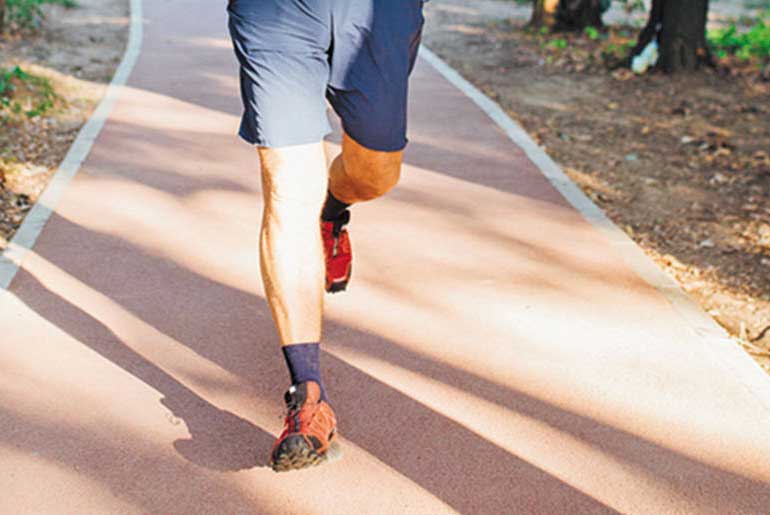Physical activity doesn’t have to be complicated—just a brisk, ten-minute daily walks can offer numerous health benefits, including reducing the risk of heart disease, stroke, and certain cancers. By making small adjustments to your walking routine, you can enhance these benefits further. Increasing your pace, incorporating intervals, focusing on posture, walking on inclines, and adding resistance are all simple ways to transform a regular walk into a more effective workout, improving cardiovascular health, building strength, and boosting overall fitness.
Walking is a simple and effective way to improve your health. By making small adjustments to your walking routine, you can significantly enhance its benefits. Here are five key strategies to boost the impact of your daily walks:
1. Vary Your Speed (Interval Walking)
- Technique: Rather than walking at a constant pace, try alternating between faster walking and slower recovery periods. This is called interval walking.
- Benefits: Interval walking is more effective for improving cardiovascular fitness and controlling blood sugar levels than walking at a steady pace. A study involving adults with type 2 diabetes showed that alternating between three minutes of fast walking and three minutes of moderate walking led to better fitness, reduced body fat, and improved blood sugar control compared to walking at a steady pace.
- How to Incorporate: Pick up your pace for a few minutes, then return to your normal speed. Repeat this cycle throughout your walk to elevate your heart rate and burn more calories.
2. Pick Up the Pace
- Health Benefits: Walking faster provides greater health benefits. Data from over 50,000 walkers suggests that walking at a pace of at least five kilometers per hour (about three miles per hour) is associated with a reduced risk of death from any cause, particularly from cardiovascular diseases and cancer
- How It Helps: Walking faster also improves heart health and aids in weight management.
- Pacing Tip: Daily walks at a speed where you’re breathing harder but can still hold a conversation. This indicates you are walking at a moderate to vigorous intensity.
3. Add Some Weight
- How It Works: Carrying extra weight while walking increases the intensity of the workout. Wearing a weighted vest or carrying a backpack forces your muscles to work harder, boosting strength and calorie burn.
- Start Gradually: Begin with a light weight (about 5% of your body weight) to avoid strain or injury. For example, if you weigh 80 kg, you could start by adding just 4 kg of weight. Gradually increase the weight as you become more comfortable.
- Important Considerations: Ensure the weight is evenly distributed to prevent imbalance, and maintain good posture during your daily walk to avoid injury.
4. Incorporate Hills or Stairs
- Why It’s Effective: Walking uphill or climbing stairs engages different muscle groups, especially the legs and glutes, compared to walking on flat terrain. This increases strength and burns more calories.
- Benefits: Walking uphill increases the intensity of your workout without needing to walk faster. Climbing stairs also improves balance and muscle function. Walking downhill on the return journey further enhances balance and muscle function.
5. Practice Mindful Walking
- Mental Health Benefits: Mindful walking involves paying attention to your movements, breathing, and surroundings. Research has shown that people who engage in mindful walking regularly experience reduced stress, improved mood, and better overall mental health.
- How to Practice: Focus on the sensations of each step, the rhythm of your breath, and the sights and sounds around you. This can not only improve mental well-being but also make your daily walks more enjoyable and engaging.
How to Get Started: Tips for Enhancing Your Walk
To safely enhance your walking routine and maximize its benefits, keep the following tips in mind:
- Warm Up and Cool Down: Start with a few minutes of easy walking to warm up your muscles. Afterward, slow down to cool down and finish with some gentle stretches to help prevent injury.
- Wear Proper Footwear: Choose comfortable shoes with good support to prevent injury and ensure a stable walking posture.
- Stay Hydrated: Bring water, especially during longer daily walks or in hot weather, to stay hydrated and avoid dehydration.
- Listen to Your Body: If you experience pain or discomfort, slow down or take a break. If the issue persists, consult a doctor.
- Gradually Increase Intensity: Whether you’re adding weight, tackling hills, or increasing your speed, do so gradually to allow your body time to adapt and avoid overexertion.
By incorporating these techniques into your walking routine, you can boost your fitness, improve your health, and make walking a more enjoyable and effective part of your daily life.
Disclaimer:
The information contained in this article is for educational and informational purposes only and is not intended as a health advice. We would ask you to consult a qualified professional or medical expert to gain additional knowledge before you choose to consume any product or perform any exercise.







